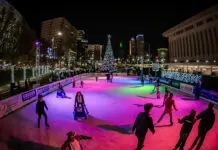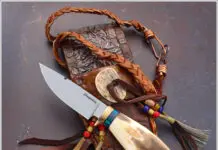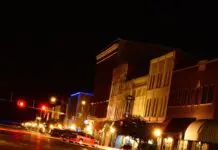Nestled in the rolling Osage Hills of northeastern Oklahoma, Bartlesville is a city rich in history, culture and artistic heritage. Often referred to as a gem of the American Midwest, Bartlesville owes much of its early growth and prosperity to the discovery of “black gold” – oil – in 1905. That year marked the drilling of Oklahoma’s first commercial oil well, the Nellie Johnstone No. 1, a pivotal moment that ignited an oil boom and transformed Bartlesville into a bustling energy hub.
This oil legacy is inextricably linked with Frank Phillips, founder of the Phillips Petroleum Company. His influence is still visible today in the Frank Phillips Home, a stately, 26-room, neo-classical mansion built in 1909. Now a museum, the home offers a glimpse into the lifestyle of one of Oklahoma’s oil barons and the early days of oil exploration in the region. The beautifully preserved estate hosts tours and events, giving insight into Phillips’ personal life and the broader economic history of Bartlesville.
Visitors can participate in a behind the scenes tour of the home that “takes people beyond the ropes into the rooms, so they get to see closets, bathrooms and a closer look at the rooms,” says the home’s director, Michelle Swaney. “The tour also includes the basement. On this tour, you get to hear more stories about the Phillips’ family and the home.”
Complementing this narrative is the Bartlesville Area History Museum, located in the historic City Hall building downtown. Through photographs, artifacts and interactive exhibits, the museum captures the evolution of Bartlesville from a pioneer settlement to a modern city.
“The Nellie Johnstone No. 1 was a highly successful oil well in Bartlesville,” says Casey O’Sullivan, collections manager at the museum. “In its 50-year career, more than 100,000 barrels of oil were produced from it. One way we present the excellent history of this historic structure is by showing the short video, ‘This is the City Oil Build,’ at the museum.”
The museum is also proudly dedicated to its living history program that allows local school children to reenact life in a replica, one-room schoolhouse.
“Students learn about how classes were taught, rules that teachers adhered to, and workings of a schoolroom, all from the perspective of the early 1900s,” O’Sullivan says.
Bartlesville’s rich artistic and cultural scene adds another dimension to its identity. Nowhere is this more vividly expressed than at Woolaroc Museum and Wildlife Preserve, located just south of town. Founded by Phillips in the 1920s as a retreat and ranch, Woolaroc (a name derived from woods, lakes and rocks) is now a sprawling 3,700-acre preserve home to bison, elk and longhorn cattle.
The museum itself features one of the finest collections of Western art and artifacts in the country. A special highlight is Camp Woolaroc, a summer camp for youth that takes place annually in July and emphasizes outdoor education, art and character development — continuing Phillips’ legacy of community enrichment.
Main image cutline: Bartlesville’s Woolaroc Museum and Wildlife Preserve combines nature with education for ideal summer programming. Photo courtesy Woolaroc






















